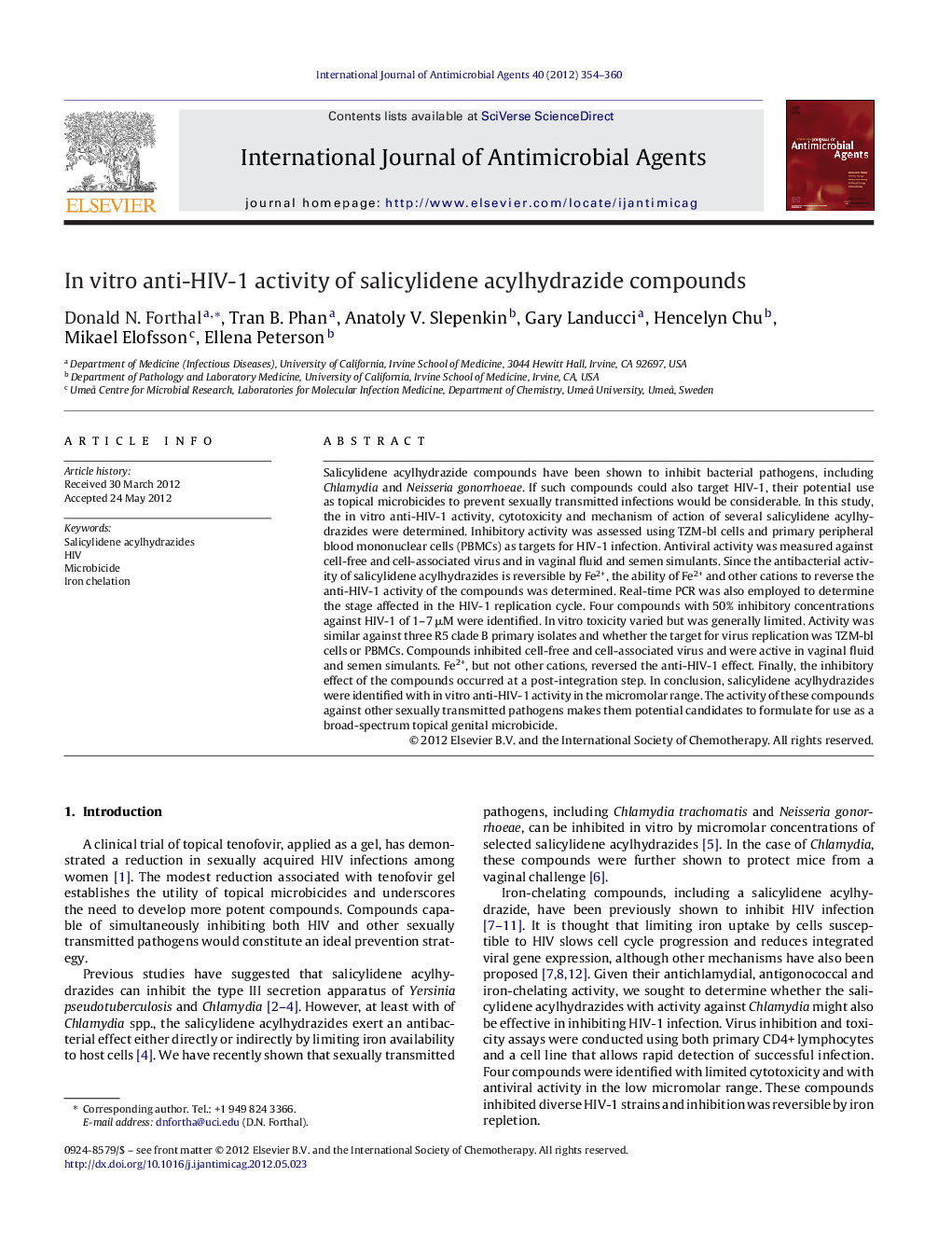| کد مقاله | کد نشریه | سال انتشار | مقاله انگلیسی | نسخه تمام متن |
|---|---|---|---|---|
| 3359288 | 1591803 | 2012 | 7 صفحه PDF | دانلود رایگان |

Salicylidene acylhydrazide compounds have been shown to inhibit bacterial pathogens, including Chlamydia and Neisseria gonorrhoeae. If such compounds could also target HIV-1, their potential use as topical microbicides to prevent sexually transmitted infections would be considerable. In this study, the in vitro anti-HIV-1 activity, cytotoxicity and mechanism of action of several salicylidene acylhydrazides were determined. Inhibitory activity was assessed using TZM-bl cells and primary peripheral blood mononuclear cells (PBMCs) as targets for HIV-1 infection. Antiviral activity was measured against cell-free and cell-associated virus and in vaginal fluid and semen simulants. Since the antibacterial activity of salicylidene acylhydrazides is reversible by Fe2+, the ability of Fe2+ and other cations to reverse the anti-HIV-1 activity of the compounds was determined. Real-time PCR was also employed to determine the stage affected in the HIV-1 replication cycle. Four compounds with 50% inhibitory concentrations against HIV-1 of 1–7 μM were identified. In vitro toxicity varied but was generally limited. Activity was similar against three R5 clade B primary isolates and whether the target for virus replication was TZM-bl cells or PBMCs. Compounds inhibited cell-free and cell-associated virus and were active in vaginal fluid and semen simulants. Fe2+, but not other cations, reversed the anti-HIV-1 effect. Finally, the inhibitory effect of the compounds occurred at a post-integration step. In conclusion, salicylidene acylhydrazides were identified with in vitro anti-HIV-1 activity in the micromolar range. The activity of these compounds against other sexually transmitted pathogens makes them potential candidates to formulate for use as a broad-spectrum topical genital microbicide.
Journal: International Journal of Antimicrobial Agents - Volume 40, Issue 4, October 2012, Pages 354–360